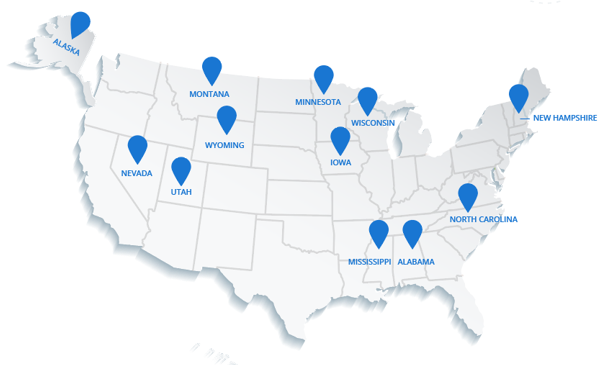If you're looking for Physician Assistant jobs, apply on DirectShifts! We have PA jobs with healthcare leaders in different states. Click on the links below to find opportunities that might interest you.
- Physician Assistants & Nurse Practitioners | Urgent Care Coverage | New York City
- Physician Assistants & Nurse Practitioners | Urgent Care Coverage | NYC
- Ongoing Urgent Care coverage needed in Stuy-Town
- Ongoing Urgent Care coverage needed in LIC
- Ongoing Urgent Care coverage needed in Williamsburg
In the medical world, surgical roles are notoriously not for the faint of heart. It takes a special, detail-oriented person to endure the rigor and complexity of surgical training. Yet, unlike in the popularized, melodramatic series, Grey's Anatomy, where young, love-stricken interns prowl over first-assist surgical opportunities, in reality, Physician Assistants (PAs) are also vital characters behind the (blindingly bright) lights, (robotistic) cameras, and (meticulous) action of the operating room. PAs can work as surgical first assists in a number of subspecialties, ranging from General Surgery to Gynecological Oncology, Cardiology, Head and Neck Surgery, Neurosurgery, Orthopedics, Ophthalmology, and beyond. PAs who seek the thrill of the OR should also consider the uniqueness of each subspecialty. Additionally, most roles are more dynamic than solely surgical responsibilities.
In addition to being first assist in the operating room, job descriptions regularly encompass inpatient and outpatient duties. Often, PAs will work autonomously in an outpatient setting, such as when conducting procedures (e.g. Pap Smears in Gynecologic Oncology and flexible laryngoscopies in Otolaryngology), and then more collaboratively on the inpatient and/or surgical side.
PA first assists in the operating room are trained on various technical skills, for example how to use the da Vinci Robotic Surgical System. The da Vinci robot is a type of minimally invasive laparoscopic procedure often preferred by patients for its decreased risk of complications and shorter surgery duration (Landeen et al 2011). Surgeries that use the da Vinci are often much more cost-effective; the patient's surgical incisions are much smaller and, thus, patients have a shorter recovery time (Halpern et al 2014). Research studies have also shown that robotic surgeries lower patient stress levels, which leads to better patient outcomes (Scandola 2011). For example, in abdominal and pelvic procedures, five ports are systematically placed throughout the abdomen. While the surgeon drives the million-dollar da Vinci robot forward in order to adjust it into its proper position over the patient, the PA angles all of the instruments to fit properly into place. Next, the surgeon uses the video game console, to control the robotic arms and complete the surgery. As a first assist, PAs help retract important structures out of the way by inserting instruments into the ports, passing sutures, and suctioning/removing specimens, all while viewing their moves via an endoscopic camera displayed onto the monitor of a computer screen. When the procedure is completed, it is typically the PA first assistant's duty to remove all the ports and suture closed the incisions. The training required is based upon the PA's experience and the institutions credentialing and privileging standards.
There is a high demand for PA first assistants across the United States and because the PA First Assist replaces an additional physician in the OR, salaries are rewarding. However, in order for a Physician Assistant new graduate to find the right opportunity—or any PA seeking to shift careers to a first assist role—she or he should first take into consideration practice environments. An important aspect of any job hunt involves introspection into what matters most to you in an ideal position.
Selecting a PA First Assist Job- Orientation and Training
- A strong learning environment, within a large institution, where the surgeon is willing to invest a lot of time to adequately train a PA in the specialty-specific technical skills. Will your supervising surgeon ensure you receive broad, quality training? As mentioned above, PA first assist roles are dynamic. PAs must learn to manage pre-operative patients, post-operative patients, inpatient needs, overnight calls, and consults from the Emergency Department. Each area will require upfront training.
- An APP structure within a well-established organization which will provide a solid orientation specific to PA needs. Hospital settings are more likely to have structured training programs that understand the role and scope of PA First Assists and have trained them in the past. Orientations typically include strict protocols and guidelines with focus on developing successful PAs to the top of their license.
- A private practice, smaller work environment where the surgeon is willing to train a new graduate PA individually. Important things to consider, without the support of an academic structure, is if the surgeon has trained PAs before and truly understands what it takes for the PA to orient to the role of First Assist. Although PAs receive excellent training in their PA programs, additional, robust training in their specialty area and specific role upon starting is paramount to success.
PAs have rigorous didactic and clinical training, and although they are prepared to deliver quality patient care, they also need the support of a strong orientation program, or fellowship, for a minimum of 6 months to a year depending on the specialty area. Practice environment can largely play into the type of support received.
Selecting a PA First Assist Job- Role and Support
Once you have decided on the ideal practice environment for you, here are three important processes to take into consideration with a new PA First Assist position:
- Evaluate all the responsibilities required for the position (i.e. outpatient visits, inpatient consults, call schedule, first assist, etc.). Decide which subspecialty you prefer. The best thing about being an PA is that you can transition to different specialties if desired, but understand that working in one specialty over another may send you down a certain career path!
- Consider the training program and support. Ask a lot of questions to understand the orientation process and the level of support the position offers.
- Consider a fellowship. Similar to how Medical Doctors complete a fellowship after their residency, some places offer NP fellowships for specialized training Most fellowship programs are through hospital systems, such as John Hopkins. As a fellow you will typically work closely with a group of PAs to learn your role and subspecialty. Generally fellowships offer compensation around 75-80% of the market salary for NPs, however the structured training is well worth it to some. A potential downfall is no guarantee of a job after completing the fellowship.
Regardless of the practice environment and subspecialty you pursue, excitement exists within the sterile walls of the OR!
References
- Landeen L, Bell M, Hubert H, Bennis L, KnutsenLarson S, Seshshadri-Kreaden U. Clinical and Cost Comparisons for Hysterectomy via Abdominal, Standard Laparoscopic, Vaginal and Robot-Assisted Approaches. South Dakota Medicine. 2011:197-209.
- Halpern N, Pastores S. Critical care medicine in the United States 20002005: An analysis of bed numbers, occupancy rates, payer mix, and costs. Critical Care Medicine. 2010;38(1):65-71. doi:10.1097/ ccm.0b013e3181b090d0. Note: Cost updated to 2014 using medical services consumer price index (CPI).
- Scandola M, Grespan L, Vicentini M, Fiorini P. RobotAssisted Laparoscopic Hysterectomy vs Traditional Laparoscopic Hysterectomy: Five Metaanalyses. Journal of Minimally Invasive Gynecology. 2011;18(6):705-715. doi:10.1016/j.jmig.2011.08.008.
This article was originally published on Melnic by Jill Gilliland. Melnic was recently acquired by DirectShifts.
.png?width=50&height=50&name=Cube-Logo-150x150%20(1).png)
March 29, 2022




Comments